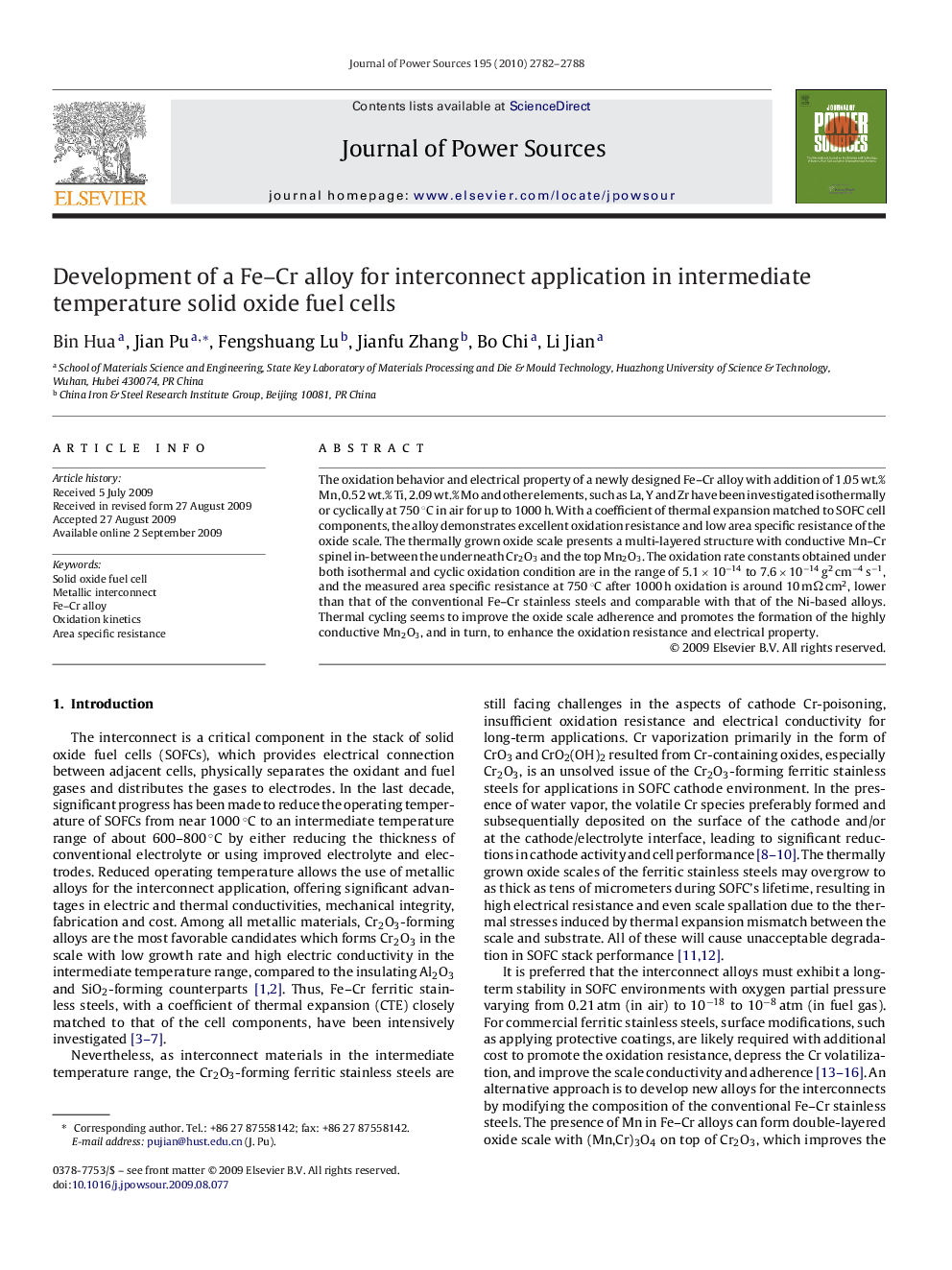| Article ID | Journal | Published Year | Pages | File Type |
|---|---|---|---|---|
| 1285032 | Journal of Power Sources | 2010 | 7 Pages |
The oxidation behavior and electrical property of a newly designed Fe–Cr alloy with addition of 1.05 wt.% Mn, 0.52 wt.% Ti, 2.09 wt.% Mo and other elements, such as La, Y and Zr have been investigated isothermally or cyclically at 750 °C in air for up to 1000 h. With a coefficient of thermal expansion matched to SOFC cell components, the alloy demonstrates excellent oxidation resistance and low area specific resistance of the oxide scale. The thermally grown oxide scale presents a multi-layered structure with conductive Mn–Cr spinel in-between the underneath Cr2O3 and the top Mn2O3. The oxidation rate constants obtained under both isothermal and cyclic oxidation condition are in the range of 5.1 × 10−14 to 7.6 × 10−14 g2 cm−4 s−1, and the measured area specific resistance at 750 °C after 1000 h oxidation is around 10 mΩ cm2, lower than that of the conventional Fe–Cr stainless steels and comparable with that of the Ni-based alloys. Thermal cycling seems to improve the oxide scale adherence and promotes the formation of the highly conductive Mn2O3, and in turn, to enhance the oxidation resistance and electrical property.
